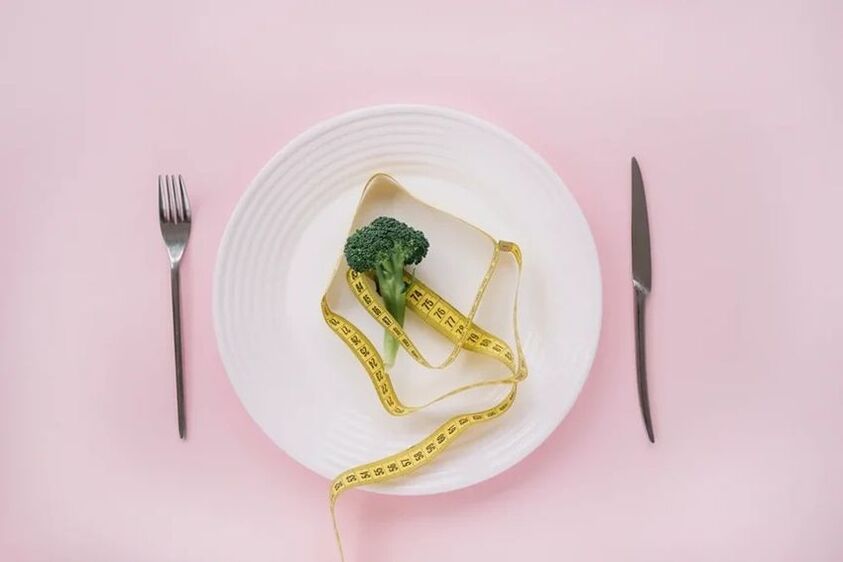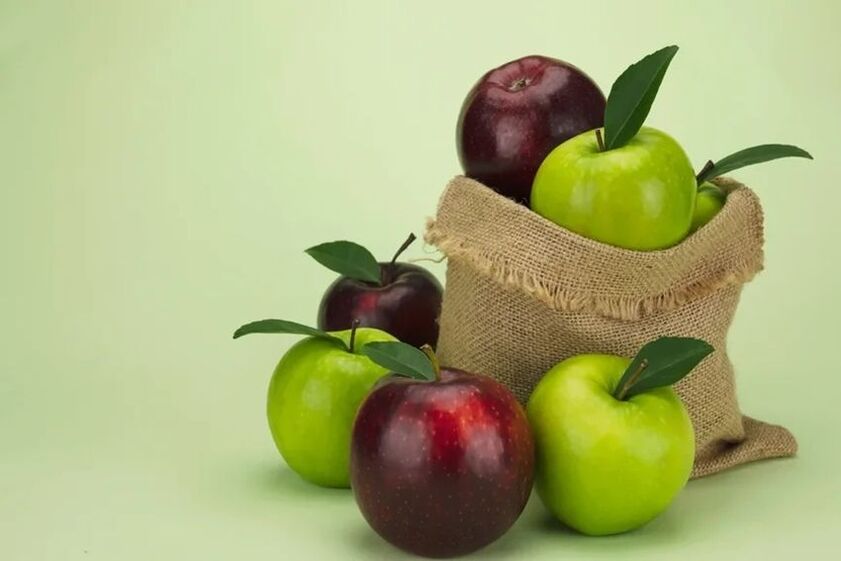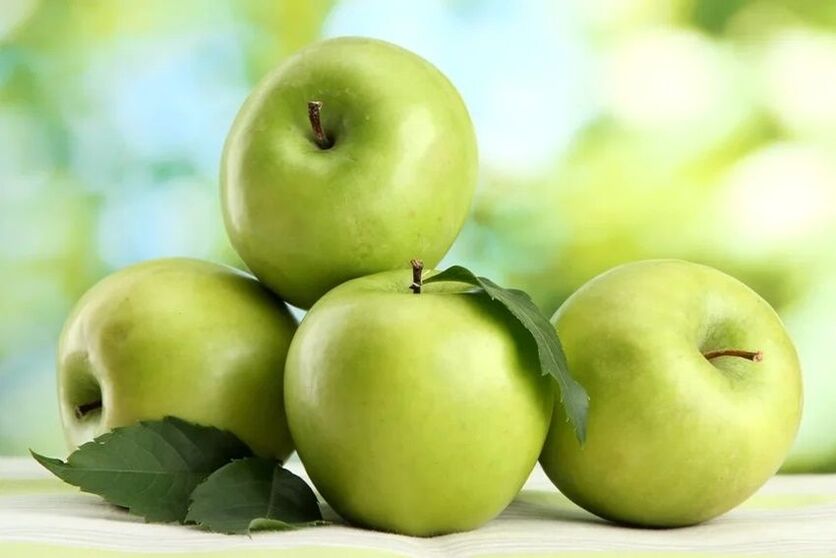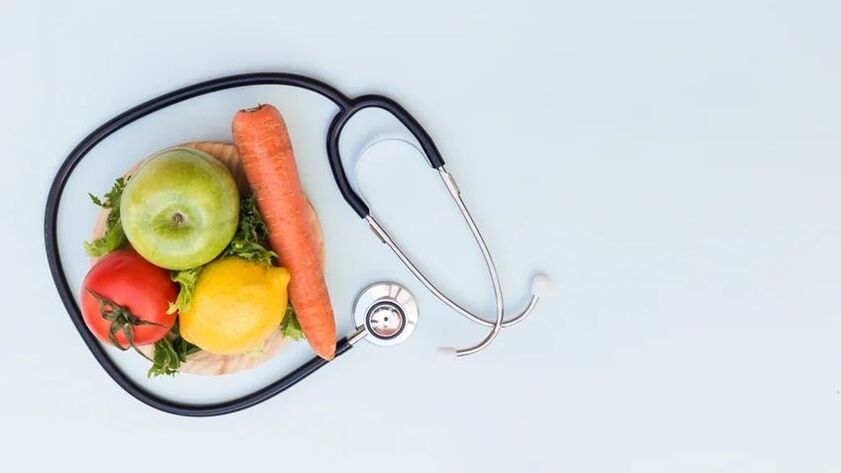Low-carbohydrate diet- it's just a diet for a month or two, it's a way of life. And while there are certain product restrictions (e. g. having to exclude soda, sugar, and baked goods), it's not much stricter than usual, but so vague in understanding proper nutrition.
Grilled meat, fish, fatty dairy products, berries, vegetables and a variety of greens - and with all this variety, you can still lose extra pounds successfully! Doesn't every girl dream of it?! But there are also pitfalls here - so we strongly recommend consulting a doctor before switching to a low-carb diet.
The essence of a low carb diet
Anyone who has tried to lose weight knows that to lose weight you have to cut out sweet and starchy foods. True, most often fatty foods are excluded from the diet - butter, meat, cream, mayonnaise. As a result, in order to get a dream figure, girls eat salad and green tea, which inevitably leads to breakdown and even greater weight gain. This approach to weight loss is fundamentally wrong. To lose weight it is necessary to eat, only the diet must be different from the one followed previously.
In addition, many women forget that healthy fats are the basis for the formation of sex hormones in the ovaries, adrenal hormones and vitamin D, which is responsible for the expression of several thousand genes!

Nutritionists are constantly studying the effects of certain foods on human health. Their work leads to various nutritional systems aimed at maintaining good health, a stable emotional background and ideal physical condition. In the mid-2000s, Swedish scientists proved that the widespread and massive consumption of sugar and starch, and not fat, as previously thought, is much more harmful to the figure. This led to a real revolution in nutrition.
Fatty foods have a completely different effect: they give the body a long-lasting feeling of satiety and provide it with energy that is sufficient for a sufficiently long period of time. Just compare: when carbohydrates are burned in the ovens of our bodies, the production factory gets a little more than 4 kilocalories in the form of cells and tissues, while fat brings in twice as much - 9 with a small tail.
Recently, another myth has been debunked that the brain needs glucose for normal function, which is said to be only obtained from pure sugar. Large-scale studies in the field of physiology and nutritional science suggest the opposite: Senile dementia is more often observed in sweet lovers, and those who have consumed moderate amounts of carbohydrates throughout their life retain clear thoughts for the rest of their lives.
In fact, nerve tissue uses glucose as a substrate for energy (i. e. , the firewood it sends to mitochondrial ovens) - this is a popular, but far from the only, way of maintaining its vital functions. In the case of prolonged starvation and a decrease in carbohydrate intake with food, our brain naturally does not like to switch from gasoline to gas - or rather from glucose to ketone bodies.

A low-carbohydrate diet for weight loss is very well tolerated by many women, as it is not accompanied by hunger attacks. Followers of this type of eating find that they do not crave foods that are high in sugar and starch. In this regard, it is not necessary to clearly normalize the amount of allowed carbohydrates, but nutritionists still give certain recommendations - from 20 to 100 g of carbohydrates per day. Your source of supply should of course be grains, vegetables and fruits, but not refined sugar and high-quality flour (and even more refined).
The constant counting of the calories consumed and the resulting feeling of guilt if one does not fit into the daily norm, however, only leads to loosening the emotional background - and then losing weight backfires with a psychosis. Add enough physical activity and make sure that satiety doesn't automatically equate with overeating and then you definitely won't need very conditional calorie calculations by applications on your phone.
- Eat only natural fats and avoid synthetic fats.
- Keep cooking food to a minimum.
- Eat with pleasure and get physical and aesthetic pleasure. Be alone with your plate - don't let phones, newspapers and TVs distract you from your meal: don't forget that digestive juices are excreted even before the food touches the taste buds of the mouth - this is what is known as the cerebral or complex reflex-Secretion phase.

There are no serious contraindications to a low-carb diet, but people with chronic conditions (such as tired adrenal syndrome) are advised to consult their doctor. Insulin-dependent patients, patients with cardiovascular problems should take into account the peculiarities of their condition and follow the recommendations of nutritionists.
How mitochondria work in the body
It seems, why would a person far from science understand such a complex subject? Understanding the fundamentals of cell function, however, will make it possible to better understand what processes are going on in the depths of our body. We will only address the effects of ketones and insulin on mitochondrial activity to show exactly how we can improve our health by changing diet.
Mitochondrial function- Energy generation from food, its connection with oxygen and the synthesis of adenosine triphosphoric acid (ATP), the basic unit of energy in an animal cell. Mitochondria are present in every cell in the body with the exception of erythrocytes - red blood cells are forced to feed themselves by slightly different glucose conversion processes.
Insulin plays an important role in this. It depends on how the body handles the energy generated: whether it uses it for current needs or stores it for a rainy day. Elevated insulin levels trigger synthesis reactions - including fat. This is the ANABOLISM hormone - that's why everything grows on it: both muscles (through the increased production of proteins) and cancer cells (actually the tumor is based on uncontrolled division).
Carbohydrate deficiency means that insulin is only produced in limited quantities - just enough to meet the body's needs. This is where the process of ketogenesis begins: fatty acids are converted into ketones, which serve as fuel for cells - including the neurons of the brain, as mentioned earlier.
8 types of low carb diets
Basic low carb diet
In summary, it can be described as follows: carbohydrates - less, protein - more (compared to your usual diet). The basis of the diet are meat, fish, eggs, cereals, vegetables, fruits, nuts, natural fats.
The recommended amount of carbohydrates depends on the goal:
- to maintain the weight or to provide the body with energy for intense sports activities - 100-150 grams. Fruits and starchy vegetables are allowed;
- Reduce weight moderately - 50-100 grams; Prohibited potatoes and sweet, high-carbohydrate fruits (such as bananas and mangoes)
- quickly get rid of excess fat - no more than 50 grams. A lot of vegetables, but little fruit.
Ketogenic Diet
When you keep carbohydrate intake to a minimum, insulin levels drop to basal levels, which triggers the onset of ketosis, a condition in which fatty acids are broken down to produce the energy the body needs. Ketone bodies are made in the liver, which itself doesn't have the enzymes to use for energy - it's actually a factory that makes goods for export. These molecules act as fuel for muscles, kidneys and brain.

The diet for a ketone diet includes foods high in protein and fat, while the amount of carbohydrates is limited to 20-50 (and often 5-10) grams per day.
Low Carb, High Fat Diet (LCHF - Low Carb, High Fat). . .
This eating style differs from the usual option in the emphasis on eating whole foods or those that have been minimally cooked. Most common in Scandinavia, where sustainable eating and living are traditionally popular in general.
Low carb paleo diet
Followers of this method of losing weight and maintaining good health believe that only those foods can be eaten that were available to people at the beginning of their appearance in the Paleolithic. You can eat meat and fish, seafood, eggs, fruits, vegetables and wild berries, nuts, seeds and roots. In a word, what the old man could collect or catch with his own hands is allowed. Everything that has arisen from the development of agriculture and the food industry is forbidden: sugar, grain, sausage and confectionery, semi-finished products. The main idea of such a diet is the confidence that at the time of the appearance of Homo sapiens, nature had prepared everything necessary for its good nutrition.

Atkins Diet
The popularity of this weight loss system has not decreased in the past forty years. Meat, fish, seafood, eggs, lettuce and other non-starchy vegetables, mushrooms, dairy products and nuts are allowed. Fruits need to be limited due to their high fructose content.
The diet has four phases:
- During the induction phase, it is recommended that you consume less than 20 g of carbohydrates for two weeks. The diet consists of protein products and vegetables that do not contain starch.
- In the phase of stable weight loss, the amount of carbohydrates increases weekly by 5 g 3-5 kg before the desired weight, this phase ends.
- In the stabilization phase, 10 g of carbohydrates are added per week.
- In the maintenance phase, healthy carbohydrates can be included in the diet. When the weight begins to increase, their number decreases again.
Eco atkins
A special Atkins diet has been developed for fans of the plant-based diet. Since no animal products are used as a source of protein, the essential amino acids are obtained from soy, legumes, nuts and gluten. This inevitably increases the amount of carbohydrates consumed compared to the classic Atkins diet, but against the background of the traditional diet, very few of them are on the vegan menu. In addition, the frequent use of cereals has a negative effect on intestinal permeability - it increases, which leads to the entry of elements of the bacterial cell wall into the systemic circulation and activation of reactions of the immune system.
Zero Carbohydrate Diet
Few choose to completely exclude the use of carbohydrates in order to start the process of active weight loss. However, there are people who only include animal products in their diet. The menu includes dishes made from meat, fish, eggs and animal fats. They don't eat vegetables, fruits, and even more grains. How safe this diet is is not known for certain, as appropriate scientific research has not yet been carried out.
In any case, the total lack of fiber (a type of broom that cleanses the intestines and also stimulates its mobility) will have a detrimental effect on the body. The resulting constipation and stool problems form a closed vicious circle, which in turn leads to bacterial overgrowth and, as a result, to an increase in intratestinal pressure. The latter has a negative effect on the mechanisms of excretion of pancreatic juice and bile.
Mediterranean cuisine
Based on the traditional Mediterranean diet of fish, seafood, olives, vegetables, cheese and durum wheat pasta. It differs from the classic low-carbohydrate diet through a reduced content of red meat and animal fats and a large proportion of vegetable, namely olive oil, oil. Studies show that this lifestyle helps Mediterranean residents suffer less from obesity, cardiovascular disease, and type II diabetes.
Benefits of a Low Carb Diet for Weight Loss
Research has shown the effectiveness of a low-carb diet for weight loss. At the same time, people do not feel hunger, no constant need for prohibited products. This is due to the specificity of protein breakdown and the sufficient calorie content of fats.
A low-carb diet can help you lose fat in your belly quickly, including the stores of viscera around your internal organs. This significantly reduces the risk of heart disease, type 2 diabetes and certain types of cancer.

Benefits of a Low Carbohydrate Diet in Fighting Disease
Obesity becomes the cause of the appearance of many pathological conditions, so it is necessary to get rid of the accumulated kilograms, even in the absence of tangible health problems. A low-carbohydrate diet should be the guiding principle of the diet for patients with diabetes, cardiac, reproductive, and neurological diseases.
- diabetes. . . Switching to fewer carbohydrates while increasing the fat content has many beneficial effects in obese patients with type 2 diabetes. If they adhere to such a diet, they will stabilize blood sugar levels and be able to take smaller dosages of pharmacological drugs that are prescribed for this pathology.
- Neurological disease. . . For people with epilepsy, a low-carb diet has long been recommended as a simple and effective way to reduce the risk of seizures. To prevent Alzheimer's disease, neurologists advise including more foods high in fat in your diet and minimizing the use of simple carbohydrates.
- Heart disease. . . By following the principles of a low-carbohydrate diet, patients with heart problems can significantly improve their condition. One study included 55 overweight subjects. After following a low-carbohydrate diet for 12 weeks, they showed a decrease in triglycerides, C-reactive protein (one of the main markers of inflammation), and also an improvement in the indicators of "good" cholesterol in HDL (High Density Lipoprotein. ). ).
Foods to Avoid on a Low Carbohydrate Diet
Adhering to a diet means excluding the following foods from the menu:
- Cereal and starchy: Bread, rolls, cakes, pasta, rice and other cereals.
- Sweet drinks: Juices, tea with sugar, milkshakes, fruit smoothies, sports drinks, cocoa, sweet lemonades.
- Sweeteners: Sugar, honey, agave, syrups.
- Vegetables with a lot of starch and sugar: Potatoes, sweet potatoes, zucchini, beets, peas.
- Alcoholic drinks: Beer, sweet cocktails and sweet wines.
- Commercially available low calorie and dietetic foods. . . Such labeling is often misleading: light mayonnaise contains starch, diabetic products contain fructose.
- Semi-finished products and sausages: Not suitable due to the high sugar, starch and soy content. They're also a hidden source of gluten.
- Fruits can be consumed in limited quantities, berries - in small portions.

These are general guidelines for all types of low carb diets. The exact amount of carbohydrates that can be consumed throughout the day depends on the goal and, accordingly, on the type of diet. Thus, ketosis can only be achieved by maximally reducing carbohydrate-containing foods. Other forms of nutrition may include up to 50 or even 100 g of carbohydrates in the diet.
List of approved products
In order to lose weight without feeling hungry and unhealthy, the developers of low-carbohydrate diet systems focus on foods rich in fat and protein.
This list includes:
- Eggs. . . They contain a lot of healthy fats and contain almost no carbohydrates. In particular, it is a source of biotin, fat-soluble vitamins (A, D and E) and choline, a precursor to one of the most important neurotransmitters in the nervous system - acetylcholine.
- Oils. . . All types of oils can be used in diet, but olive, coconut, and avocado oils are considered leaders in terms of health benefits.
- A fish. . . It is better to give preference to fatty varieties - salmon, trout, sardines. Their adequate consumption supplies the body with omega-3 fatty acids, which significantly reduces the risk of diseases of the cardiovascular system and impaired cognitive functions.
- Meat and poultry. . . Veal, chicken, turkey and rabbit meat are recommended.
- Dairy products. . . Cream, unsweetened yogurt, butter, cottage cheese, cheese.
- Non-starchy vegetables. . . All vegetables, broccoli, all kinds of lettuce, asparagus, cauliflower, peppers, mushrooms.
- avocado. . . A unique fruit with lots of healthy fat.
I will give you a sample menu
An example of a low carb diet for weight loss for a week looks like this:
breakfast:
- An omelette made from two eggs and some whole milk or cream.
- Two pieces of hard cheese.
- Coffee with coconut milk or cream.
dinner:
- Pork steak.
- Fresh vegetable salad with olive oil.
- Cream cheese (3 tablespoons).
- Tea without sugar.
Afternoon snack(optional - but it's still better to aim for the most physiological three meals a day):
- 20-30 pieces of pre-soaked almonds.
- Baked apple (no raisins, sugar and honey! ).

dinner:
- Greek salad (bell pepper, cucumber, tomato, feta, olives).
- Grilled mushrooms or fried in vegetable oil.
- Baked fish.
Menu for the week
In order to simplify the process of losing weight as much as possible and save you time, we recommend that you use a daily menu for strict adherence to a low-carb diet. If you want, you can make changes to it without going beyond the list of approved products.
Monday
- Breakfast.Omelette with cheese, salad made from vegetables and herbs, toast with avocado, unsweetened coffee with a piece of butter or coconut oil and berries.
- Dinner.Grilled or roasted pork steak, lettuce, salted homemade cheese.
- Dinner.Veal in cream sauce, coleslaw.
Tuesday
- Breakfast.Zander schnitzel, sliced cucumber and tomatoes, natural yogurt for dessert (you can add coconut, almond flakes and some berries whipped in a blender).
- Dinner.Mushroom soup, tobacco chicken, homemade eggplant and red pepper caviar.
- Dinner.Duck breast with a vegetable garnish.

Wednesday
- Breakfast.Ham omelette, green salad with sour cream dressing, a handful of your favorite nuts, green tea.
- Dinner.Zucchini puree soup, fried cheese, baked apple (it is better to choose unsweetened varieties).
- Dinner.Roasted veal, cauliflower, steamed in cream.
Thursday
- Breakfast.Poached eggs with avocado, spinach, lightly salted salmon.
- Dinner.Pike cutlets, grilled vegetables.
- Dinner.Pork and broccoli casserole in sour cream sauce with a cheese crust.
Friday
- Breakfast.Soft-boiled eggs, zucchini pancakes with ricotta cheese, olives, cocoa.
- Dinner.Chicken fillet cutlet on a vegetable pillow.
- Dinner.Salmon steak with pumpkin puree.
Saturday
- Breakfast.Omelette with ham and sundried tomatoes, hard cheese, a handful of nuts and berries.
- Dinner.Saddle of rabbit with poached and fried asparagus.
- Dinner.Fry the chicken leg, mushrooms and aubergines.
Sunday
- Breakfast.Poached egg with salmon and spinach, baked turkey, sugar-free coffee.
- Dinner.Turkey steak, cauliflower in a creamy sauce.
- Dinner.Sausages and broccoli puree.

We remind you that for those looking to switch to a low-carb diet, this weekly menu is just a guide to creating a personalized diet. It is impossible to take into account each person's taste preferences. The main thing is to stick to the basic principle of a low-carb diet: low-carbohydrate, high-fat.
Low carb diet for diabetes
The principles of a low-carb diet differ depending on the type of diabetes. Insulin dependent patients should eat a balanced diet that includes foods with a low glycemic index.

The type 2 diabetes low-carb diet has some special features:
- The main part of the medical diet consists of vegetables and herbs. For women, the norm for non-starchy vegetables is 500 g per day, if she does not expend a lot of energy, and up to 800 g - during physical work or regular exercise.
- To prevent cholesterol from rising, people with diabetes eat a low-carbohydrate diet without saturated fat. Preference is given to healthy unsaturated fats found in low-fat fish and vegetable fats. This means that pork, lard, salmon, salmon are not recommended. Instead, nutritionists advise diabetics to eat more nuts, avocados, olives, and use vegetable oils in cooking.
- Complete rejection of carbohydrates in such patients is contraindicated, since it is associated with a drop in blood sugar and a deterioration in well-being. Carbohydrates should be consumed evenly throughout the day, with vegetables being the best source of carbohydrates.
- For snacks, you can use high-protein, low-glycemic index foods that will satiate hunger quickly - pre-soaked nuts are perfect.
- For type 2 diabetes, a low-carbohydrate diet with a low-sugar menu may require adjustments to previously prescribed medication doses. In the first phase, it is necessary to constantly measure the level of glucose in the blood: if it becomes lower due to a change in diet, the doctor will reduce the dosage of antihyperglycemic drugs. Consultation with an endocrinologist is necessary, it is not worthwhile to independently adjust the intake of medication.
Low Carb Diet for Fatigue Adrenal Syndrome
Fatigue adrenal syndrome occurs as a result of constant stressful conditions. One of the symptoms of this condition is hypoglycemia and accompanying hunger, irritability, and headache.

Treatment is accompanied by proper nutrition based on three key points:
- In no case should you abuse sweets. Consumption of sweets temporarily improves your well-being, but then inevitably leads to a sharp drop in the concentration of glucose in the blood and the subsequent malaise.
- Any sausage is better to give preference to a normal piece of meat. Products obtained through complex technological processing contain many substances that are contraindicated in such a diagnosis.
- Gluten and vegetable oils, which contain pro-inflammatory polyunsaturated omega-6 fatty acids, must be eliminated from the diet.
In addition, a low-carb diet for men and women with adrenal fatigue syndrome means completely avoiding coffee. It's all about cortisol, the production of which increases under the influence of caffeine. As a result, the metabolism slows down, and the process of losing weight slows down.






























